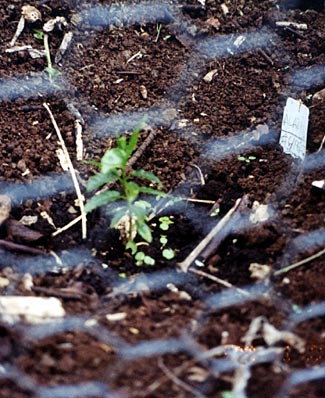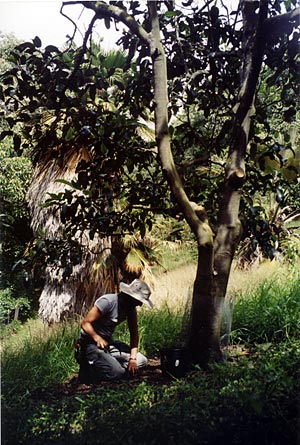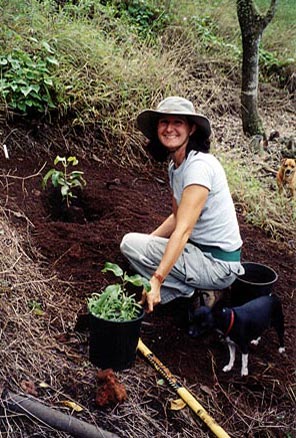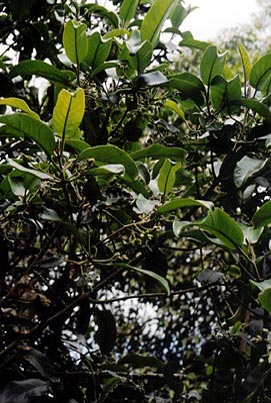
|
|
May 2006
|
August 2005
|
June 8, 2005
|
August 2004
|
| May 2004 |
 |
 |
|
| Three Alani (Melicope knudsenii) seedlings “volunteered” under the mother tree for the first time ever (May ’04). Some species of seeds have a chemical in the seed coat, which needs to be leached before it germination, nature’s way of preventing seeds from sprouting during a drought. The unusally wet winter may have initiated germination in these volunteers. If so, this would support seed soaking in our germination efforts. | ||
March 2004
|
 |
 |
|
| Arlene Taus digs for mycorrhizas from between roots of Alani to innoculate soil of new seedlings | Two Alani (Melicope knudsenii) seedlings from 2002 harvest, propagated by Anna Palomino were planted in the Arboretum March 2004. Here Arlene poses with seedlings. |
January 12, 2004
|
June 8, 2003
1200 seeds were harvested from the Pu’u Mahoe Alani and distributed to 16 recipients. Additionally in 2003, 4 shipments of green seed of different maturities were mailed to the Lyon Arboretum for micro-propagation. April 2003In April of 2003 the Fleming Arboretum received a healthy Alani seedling (’02 harvest) from Anna Palomino of Hoolawa Farm to enter in the in the Ulupalakua Ag Fair. The Alani seedling was 4” tall and arrived in a 4” pot. It won 1st place. Click here to see photo.
One of the seedlings was successfully propagated from the ’02 harvest and is being cared for by Anna Palomino of Hoolawa Farm.
Potting Mix – The seeding was transplanted into a one-gallon pot using 3/4 Pu`u Mahoe’s cinder plus 1/4 rich topsoil from under Kukui Nut grove.
Watering – Once a week.
Concern – Too much water if it rained.
Stem Rot Prevention – The seedling was sprayed once a week with Rosepride for 3 weeks hoping to prevent stem rot. Then sprayed every-other-week alternating Rosepride with 1/2 – strength Miracle Grow (15-30-15 with trace elements) that was misted on leaves.
Rosepride is a systemic fungicide plus systemic insecticide. The systemic fungicide Triflorine has broad range use against fungus. Alternating with Miracle Grow would help the seedling to become strong and grow quickly out of the vulnerable stem rot stage.
The seedling is now 8” tall with 6 leaves and a trunk.
Concern – By not having an alternating systemic fungicide, the fungus may become immune.
Spider Mites – The seedling showed signs of spider mites, which confirmed the need for the combination systemic insecticides / fungicide Rosepride. The insecticide found in Rosepride seemed to help.
Avid was sprayed with 1/2 strength Miracle Grow and worked the best.
Black Ring Fungus – Black fungus appeared under the older leaves. One tablespoon per gallon powered copper was sprayed under and over each leaf. This worked right away.
Fertilizer – 1/8 teaspoon per gallon pot of 14-14-14 Osmocoat with trace elements. Also have watered the tree twice with diluted liquid seaweed. The tree responded with new growth after both applications.


